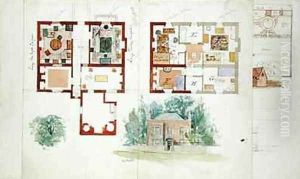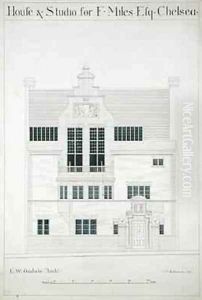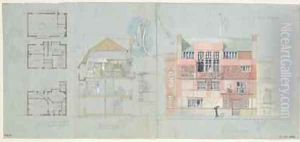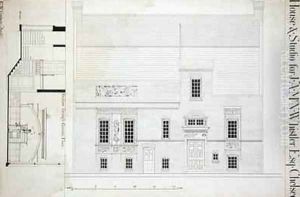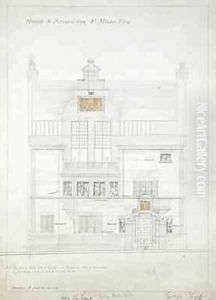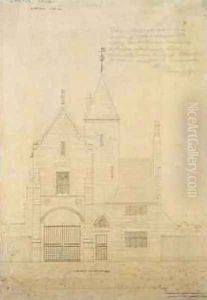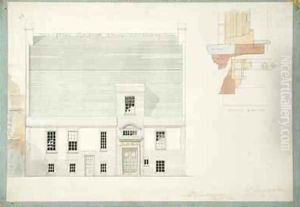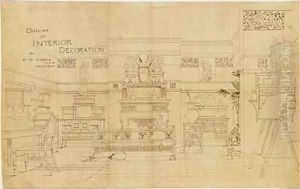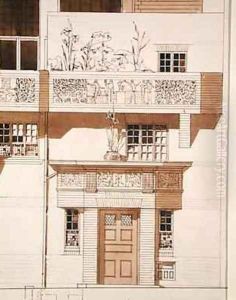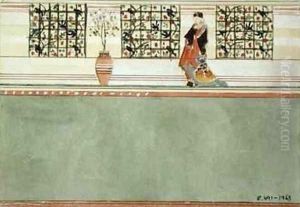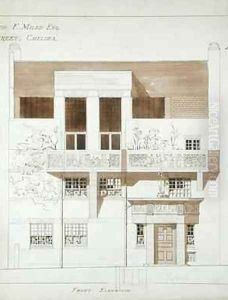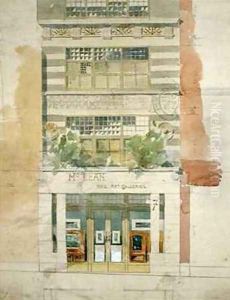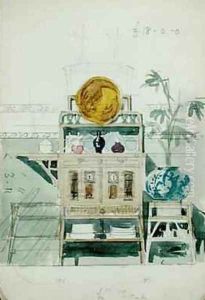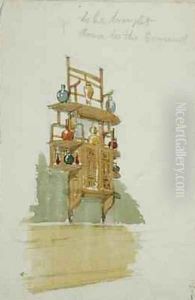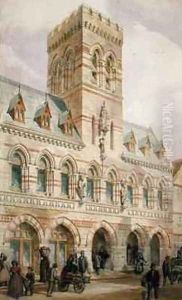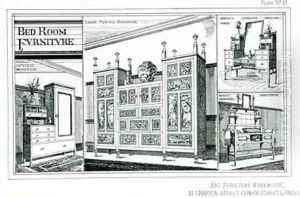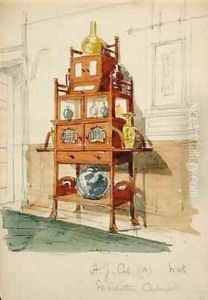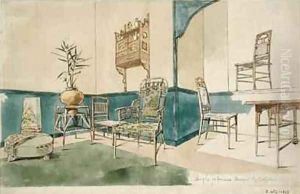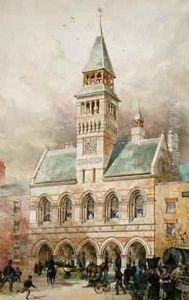Edward William Godwin Paintings
Edward William Godwin was a notable English architect and designer, born on May 26, 1833, in Bristol, England. He became a significant figure in the Aesthetic Movement, which flourished during the late 19th century, emphasizing the visual and sensual qualities of art and design over practical, moral, or narrative considerations.
Godwin began his career as an apprentice to William Armstrong, a Bristol architect, before moving to London where he worked for a brief period with another architect. In 1854, he established his own practice back in Bristol. His early works were primarily in the Gothic Revival style, which was popular in Victorian Britain. However, his interests soon evolved towards a more eclectic approach that included influences from the Far East, which was a result of the opening of Japan to the West in the 1850s.
One of his most significant works is the Northampton Guildhall, completed in 1864, which is considered one of his finest achievements in public architecture. His designs often featured asymmetry and a mix of different styles, which was quite innovative at the time. Godwin's domestic designs, including The Orchard in Chipping Campden, also reflected his unique style that combined functionality with aesthetics.
In addition to architecture, Godwin was also a prolific furniture designer. His designs were characterized by their elegance, minimalism, and use of high-quality materials. His furniture pieces were ahead of their time, aligning with what would later be recognized as Modernist principles. He designed interiors and furnishings for several influential clients, including the artist James McNeill Whistler, for whom he created the famous White House in Chelsea.
Godwin's personal life was also of note, as he had a long-standing relationship with the actress Ellen Terry, with whom he had two children. His relationship with Terry, who was 30 years his junior, attracted social controversy, but it also inspired some of his work, including designs for the theater.
Godwin's influence extended beyond his lifetime, as his work inspired the next generation of architects and designers, including Charles Rennie Mackintosh and the Arts and Crafts Movement. He lectured widely on art and design and wrote several influential articles and essays.
Edward William Godwin's innovative designs and his contribution to the Aesthetic Movement left a lasting impact on the fields of architecture, furniture design, and interior design. He passed away on October 6, 1886, in London, but his legacy continued to influence the evolution of design well into the 20th century.
